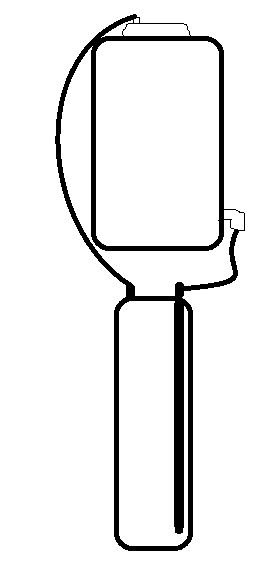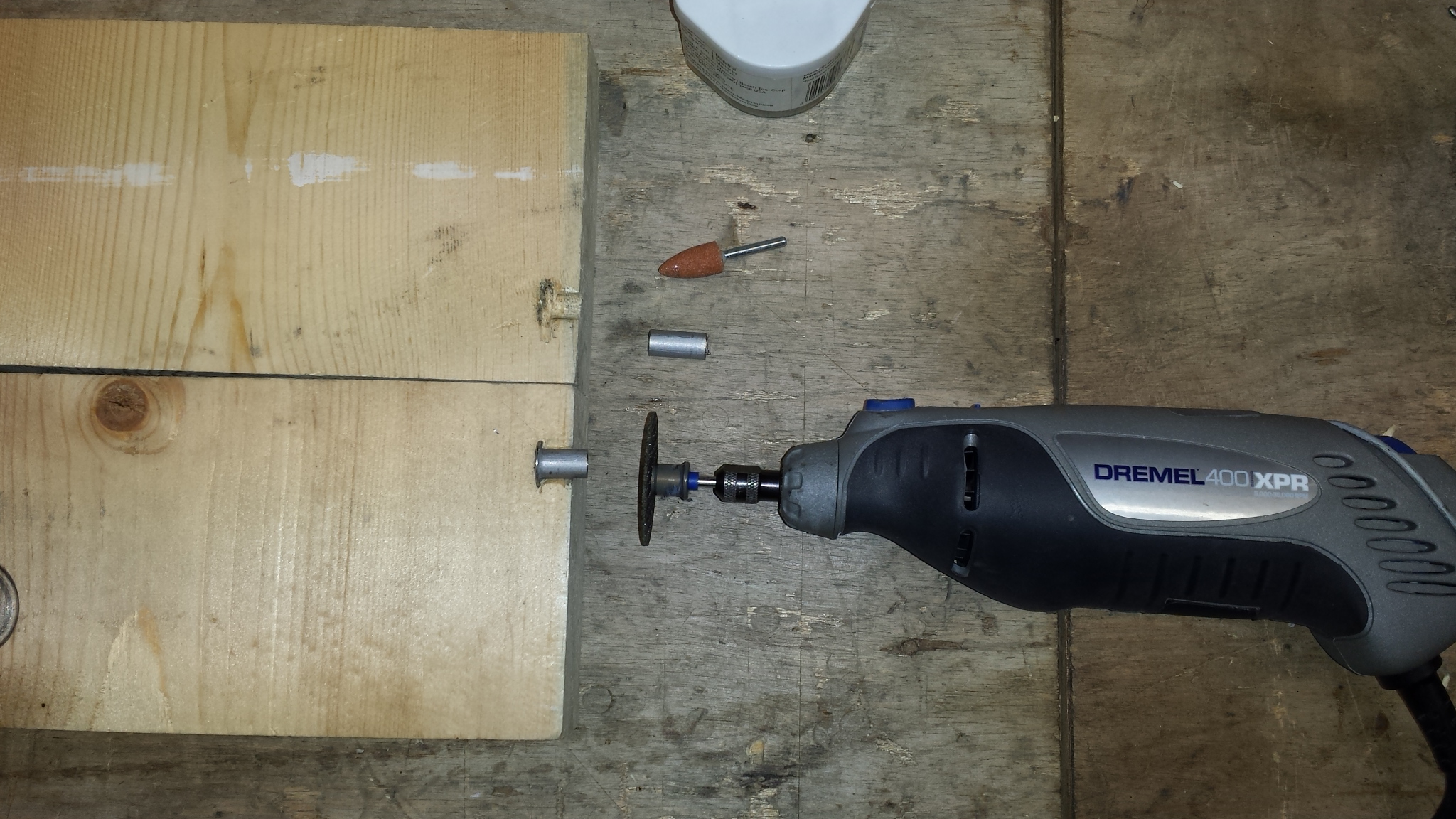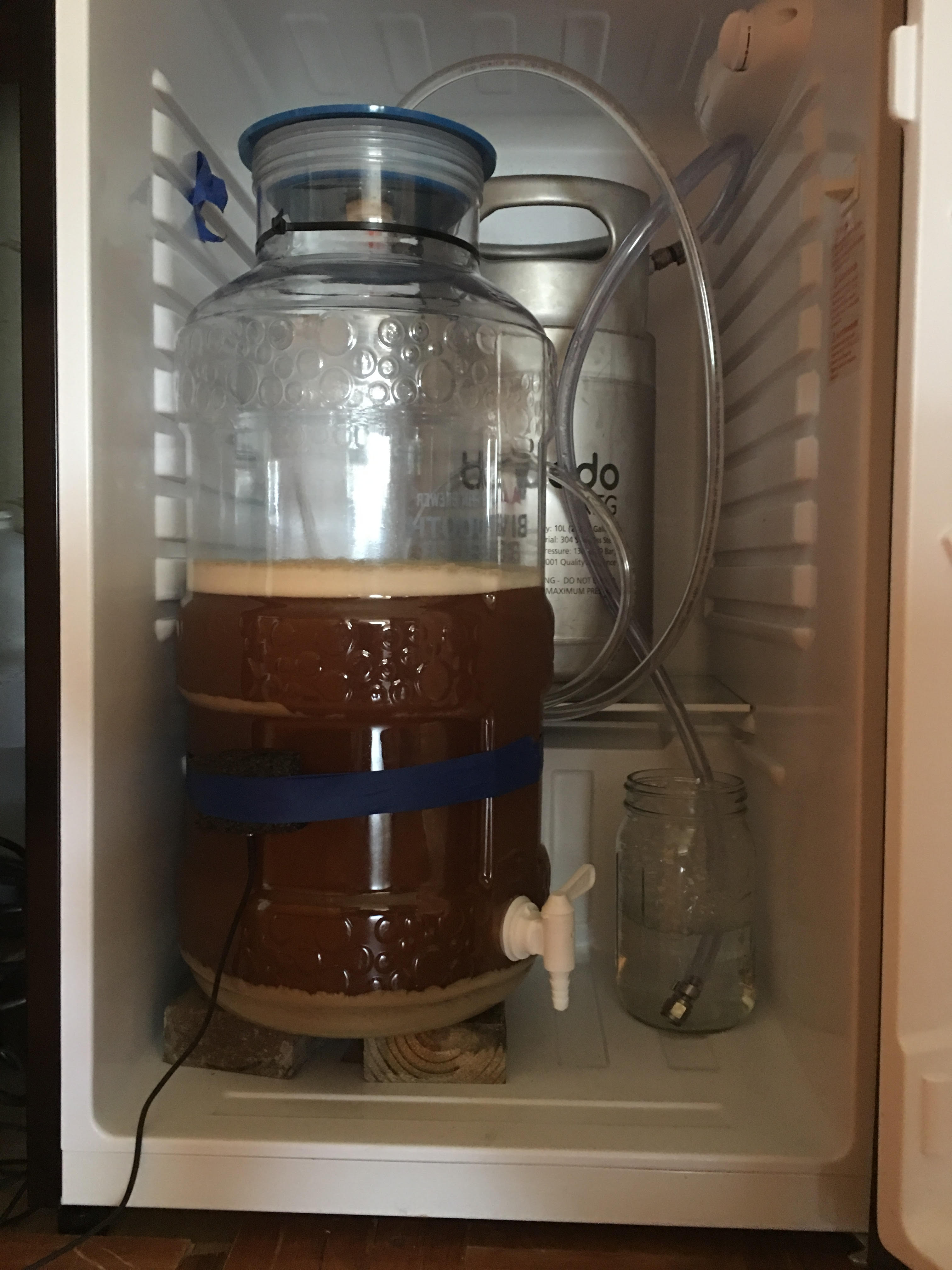You are using an out of date browser. It may not display this or other websites correctly.
You should upgrade or use an alternative browser.
You should upgrade or use an alternative browser.
Is a closed transfer really necessary?
- Thread starter Goose5
- Start date

Help Support Homebrew Talk:
This site may earn a commission from merchant affiliate
links, including eBay, Amazon, and others.
I just had a massive FAIL on my first attempt at a closed transfer.
Here’s what I did...
My Spiedel fermenter was up on a table and the ball lock on the floor.
I rigged up a ball lock connector to about a foot of tubing.
I connected the tubing to the spigot on my Spiedel fermenter and hooked the other end to the ball lock dip tube on the purged keg. Opened the pressure relief valve and clicked it to stay open. Then I opened the spigot on the fermenter. To my horror the air in the tubbing bubbled up through the beer. Not good for oxidation.
Then the beer flowed for about 10 seconds then the transfer immediately clogged.
What did I do wrong?
First of all, that is not a closed transfer since your fermenter was open. During closed transfers, CO2 is supposed to fill the fermenter as the beer drains from it. Closed transfers are all about low O2 pickup, and your method resulted in a ton of O2 pickup since air was allowed to flood the headspace as the beer drained.
Your bubble problem was probably due to some kind of restriction in the tubing. Since no or little beer flowed through it to push the air out, the air simply rose through the tubing and into the beer. The same thing will happen with my conical fermenter if I open the racking valve while the tubing is blocked. There needs to be unrestricted flow so the beer can quickly move through the tubing and push the air out.
I bet your transfer stopped due to a clogged poppet.
Ok that makes sense. A couple follow up questions:
If I remove the poppet before transfer, once the transfer is done then you have to replace the poppet which would result in exposure to air correct? Or since it is just the beer in the dip tube I guess you could just pull a half pint off immediately after replacing the poppet?
Is there a good way to attach CO2 to a Spiedel fermenter to fill it as it drains? Would attaching the gas out of the keg be better or worse than a CO2 tank?
If I remove the poppet before transfer, once the transfer is done then you have to replace the poppet which would result in exposure to air correct? Or since it is just the beer in the dip tube I guess you could just pull a half pint off immediately after replacing the poppet?
Is there a good way to attach CO2 to a Spiedel fermenter to fill it as it drains? Would attaching the gas out of the keg be better or worse than a CO2 tank?
Ok that makes sense. A couple follow up questions:
If I remove the poppet before transfer, once the transfer is done then you have to replace the poppet which would result in exposure to air correct? Or since it is just the beer in the dip tube I guess you could just pull a half pint off immediately after replacing the poppet?
Is there a good way to attach CO2 to a Spiedel fermenter to fill it as it drains? Would attaching the gas out of the keg be better or worse than a CO2 tank?

If I remove the poppet before transfer, once the transfer is done then you have to replace the poppet which would result in exposure to air correct? Or since it is just the beer in the dip tube I guess you could just pull a half pint off immediately after replacing the poppet?
Correct. Barely any exposure would happen if you did that. I used to do that before I started using a screen to filter out hop debris and the beers were always amazing and not oxidized at all.
Is there a good way to attach CO2 to a Spiedel fermenter to fill it as it drains.
Sure, put a corny post in the lid.
Would attaching the gas out of the keg be better or worse than a CO2 tank?
Either way is fine. I use CO2 from a cylinder because I have a dedicated one that's kept near my fermentation chamber. Just make sure you don't over pressurize it. You don't need very much pressure at all. I use 0.5 psi and it's plenty to keep up with the transfer rate.
Great points thanks for the help. I’ve already put a thermowell in the lid so I think I can manage a Corney post.
Earlier in the thread people were talking about purging the keg by filling the keg with Star San and serving. This seems like it would save me a lot of CO2 compared to the 30 psi purge repeat method. One issue though, does anyone else here use shortened dip tubes? How do you deal with the extra sanitizer floating at the bottom that you can’t pickup?
Earlier in the thread people were talking about purging the keg by filling the keg with Star San and serving. This seems like it would save me a lot of CO2 compared to the 30 psi purge repeat method. One issue though, does anyone else here use shortened dip tubes? How do you deal with the extra sanitizer floating at the bottom that you can’t pickup?

$172.35
2 Inch Tri Clamp Keg Manifold With Ball Lock Posts, Pressure Gauge, PRV (0-30 PSI) – Homebrew, Fermentation, Kegging System
wuhanshijiayangzhiyimaoyiyouxiangongsi

$44.99
$49.95
Craft A Brew - Mead Making Kit – Reusable Make Your Own Mead Kit – Yields 1 Gallon of Mead
Craft a Brew

$10.99 ($31.16 / Ounce)
Hornindal Kveik Yeast for Homebrewing - Mead, Cider, Wine, Beer - 10g Packet - Saccharomyces Cerevisiae - Sold by Shadowhive.com
Shadowhive

$20.94
$29.99
The Brew Your Own Big Book of Clone Recipes: Featuring 300 Homebrew Recipes from Your Favorite Breweries
Amazon.com

$53.24
1pc Hose Barb/MFL 1.5" Tri Clamp to Ball Lock Post Liquid Gas Homebrew Kegging Fermentation Parts Brewer Hardware SUS304(Liquid Hose Barb)
Guangshui Weilu You Trading Co., Ltd

$479.00
$559.00
EdgeStar KC1000SS Craft Brew Kegerator for 1/6 Barrel and Cornelius Kegs
Amazon.com

$7.79 ($7.79 / Count)
Craft A Brew - LalBrew Voss™ - Kveik Ale Yeast - For Craft Lagers - Ingredients for Home Brewing - Beer Making Supplies - (1 Pack)
Craft a Brew

$176.97
1pc Commercial Keg Manifold 2" Tri Clamp,Ball Lock Tapping Head,Pressure Gauge/Adjustable PRV for Kegging,Fermentation Control
hanhanbaihuoxiaoshoudian

$53.24
1pc Hose Barb/MFL 1.5" Tri Clamp to Ball Lock Post Liquid Gas Homebrew Kegging Fermentation Parts Brewer Hardware SUS304(Liquid Hose Barb)
yunchengshiyanhuqucuichendianzishangwuyouxiangongsi

$22.00 ($623.23 / Ounce)
AMZLMPKNTW Ball Lock Sample Faucet 30cm Reinforced Silicone Hose Secondary Fermentation Homebrew Kegging joyful
无为中南商贸有限公司

$33.99 ($17.00 / Count)
$41.99 ($21.00 / Count)
2 Pack 1 Gallon Large Fermentation Jars with 3 Airlocks and 2 SCREW Lids(100% Airtight Heavy Duty Lid w Silicone) - Wide Mouth Glass Jars w Scale Mark - Pickle Jars for Sauerkraut, Sourdough Starter
Qianfenie Direct

$58.16
HUIZHUGS Brewing Equipment Keg Ball Lock Faucet 30cm Reinforced Silicone Hose Secondary Fermentation Homebrew Kegging Brewing Equipment
xiangshuizhenzhanglingfengshop
Blazinlow86
Well-Known Member
- Joined
- Oct 19, 2016
- Messages
- 1,687
- Reaction score
- 743
You could probably even turn it upside down and open the prv if your kegs have them. CheersShorten your gas dip tube, pressurize the keg, turn it upside down, and blast the sanitizer out the gas post.
Robert65
Major Obvious (recently promoted)
The PRV in the keg lid stands proud of the inner surface. Just inverting and pulling the PRV will leave you with a lid full of sanitizer in the keg. Trim the gas tube flush with or slightly recessed from the inner surface of the keg. Invert, with the gas post at the lowest point, pop on a QD, and blow out every last drop.You could probably even turn it upside down and open the prv if your kegs have them. Cheers
The PRV in the keg lid stands proud of the inner surface. Just inverting and pulling the PRV will leave you with a lid full of sanitizer in the keg. Trim the gas tube flush with or slightly recessed from the inner surface of the keg. Invert, with the gas post at the lowest point, pop on a QD, and blow out every last drop.
Exactly.
Brilliant! I can’t believe I didn’t think of that but pretty clever I must admit.
So I assume no downside to having a shortened gas tube?
Yes there is a downside. That approach will still not enable you to get all the sanitizer out. Opening the bail on the lid and inverting the keg and very slightly cracking the lid so that the sanitizer can leak out, does get all of it out. If you connected your CO2 supply to the keg and supplied a very low pressure, you can avoid getting air into the keg.
Robert65
Major Obvious (recently promoted)
Yes there is a downside. That approach will still not enable you to get all the sanitizer out. Opening the bail on the lid and inverting the keg and very slightly cracking the lid so that the sanitizer can leak out, does get all of it out. If you connected your CO2 supply to the keg and supplied a very low pressure, you can avoid getting air into the keg.
I respectfully disagree. Using the shortened gas tube and correctly positioning the keg will in fact discharge all of the sanitizer. In fact, it's the only method that will do so with certainty. I speak from experience, and from reason. The gas post will be the lowest point in the keg, lower than any other inside surface, including, and especially, the lid. In either method, you will have to move the keg around a bit to make sure you have drained all possible recesses -- like the concave lid -- but using the shortened gas tube avoids the necessity of opening the lid at all, ensuring no air ingress and greatly simplifying the operation.
Last edited:
Yes there is a downside. That approach will still not enable you to get all the sanitizer out. Opening the bail on the lid and inverting the keg and very slightly cracking the lid so that the sanitizer can leak out, does get all of it out. If you connected your CO2 supply to the keg and supplied a very low pressure, you can avoid getting air into the keg.
I also disagree with this. There is definitely no downside and it does in fact get all of the sanitizer out. How can it not? Opening the lid defeats the purpose of what we're trying to do here as it will let O2 in, especially considering that there must be zero pressure in a keg to open the lid. By having a few pounds of pressure in the keg and pushing the residual sanitizer out of he gas post with a shortened dip tube, only sanitizer and CO2 escape. There is no chance of any air getting in as long as you still have a little pressure in the keg after all the sanitizer has been purged.
[...]So I assume no downside to having a shortened gas tube?
None. It just has to be long enough to hold onto the small O-ring under the flange.
And if cut to just under 1/2" length the described technique does in fact work to get all of the sanitizer out...

Cheers!
None. It just has to be long enough to hold onto the small O-ring under the flange.
Correct. I was just going to say that. That's really the gas dip tube's only purpose in life. It doesn't have to hang down inside the keg 1", 1/4", or any length at all. If you want to fully purge a keg of sanitizer, you must cut them so they do not hang down inside the keg at all.
Robert65
Major Obvious (recently promoted)
None. It just has to be long enough to hold onto the small O-ring under the flange.
And if cut to just under 1/2" length the described technique does in fact work to get all of the sanitizer out...
View attachment 637691
Cheers!
Sweet jig, day_trippr.
Just soft pine scraps in a bench vise.
I strongly recommend using a virgin fiber cutoff wheel rather than the ceramic ones (which tend to detonate).
The cone grinder is handy for deburring inside and out...
Cheers!
I strongly recommend using a virgin fiber cutoff wheel rather than the ceramic ones (which tend to detonate).
The cone grinder is handy for deburring inside and out...
Cheers!
Robert65
Major Obvious (recently promoted)
Another option -- as it is difficult without a jig like that to cut the short tubes -- is to start with a liquid tube if you have a janky old spare around that you won't miss. You can just use a regular tubing cutter on those and just lop off the top 1/2 inch.
Robert65
Major Obvious (recently promoted)
And I've noticed that some of the replacemnt gas tubes (but not liquid) at LHBS are aluminum now. A tubing cutter will just squash that flat anyway.
shoengine
Whale Noun Member
I don't bother getting the last ounce of sanitizer out , as it'll neutralize in the higher pH of the beer.
brewbama
Well-Known Member
- Joined
- Sep 20, 2013
- Messages
- 3,802
- Reaction score
- 2,829
I’ll be cutting my gas tube as soon as the keg I am drinking from kicks. Easy enough. But doesn’t the support housing for the tube extend into the keg? I can’t remember and don’t have an empty to inspect. If it does it represents the same problem as the PRV structure.
But doesn’t the support housing for the tube extend into the keg? I can’t remember and don’t have an empty to inspect. If it does it represents the same problem as the PRV structure.
No, it does not. This is a way around the problem of using the PRV. It's the way to go.
Robert65
Major Obvious (recently promoted)
Nope. The threaded part is all up top, inside it's flush. Basically a hole in the keg with the fitting welded on, and smoothed out inside. At least on the old Cornies. Are the new AEB Italy ones any different, anybody?I’ll be cutting my gas tube as soon as the keg I am drinking from kicks. Easy enough. But doesn’t the support housing for the tube extend into the keg? I can’t remember and don’t have an empty to inspect. If it does it represents the same problem as the PRV structure.
Well I finally got around to setting up for a closed transfer using C02 from fermentation.
Brewed a Sierra clone yesterday and its going good so far. I'm concerned though how I will dry hop. I guess I"ll go commando and just toss them in. i don't cold crash so I'm hoping they will settle out enough so I don't get a clogged poppet. I brew 3 gal batches and keg into a 2.5 gal keg. There is always enough after kegging to fill a couple of bottles so hoping the extra volume will keep sediment from hitting the poppet.

Brewed a Sierra clone yesterday and its going good so far. I'm concerned though how I will dry hop. I guess I"ll go commando and just toss them in. i don't cold crash so I'm hoping they will settle out enough so I don't get a clogged poppet. I brew 3 gal batches and keg into a 2.5 gal keg. There is always enough after kegging to fill a couple of bottles so hoping the extra volume will keep sediment from hitting the poppet.

Similar threads
- Replies
- 4
- Views
- 573
- Replies
- 18
- Views
- 957
- Replies
- 3
- Views
- 610











![Craft A Brew - Safale BE-256 Yeast - Fermentis - Belgian Ale Dry Yeast - For Belgian & Strong Ales - Ingredients for Home Brewing - Beer Making Supplies - [3 Pack]](https://m.media-amazon.com/images/I/51bcKEwQmWL._SL500_.jpg)


































